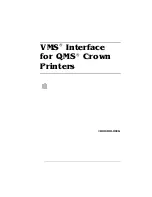
To stop the WebSphere Partner Gateway components, run one of the following
scripts:
Note:
You do not have to specify a server name. The server name is always
server1
when simple mode is used.
v
UNIX
(R)
<install dir>
/bin/bcgStopServer.sh
v
Windows
(R)
<install dir>
\bin\bcgStopServer.bat
Managing WebSphere Partner Gateway components in a distributed
mode system
For a distributed mode system, the WebSphere Deployment Manager application is
used to control all of the WebSphere Partner Gateway applications. One of the
computers in the distributed mode system is chosen during installation to host the
Deployment Manager. When the WebSphere Partner Gateway applications are
installed, the application server or servers that they are installed on are placed
under control of the Deployment Manager. As the system administrator, you
manage the WebSphere Partner Gateway components by using the Deployment
Manager. This provides a single point of access to all the components, even if they
are on different computers.
See the WebSphere Application Server Network Deployment product
documentation for a detailed description of the way that a Deployment Manager is
used to administer application servers. For purposes of this document, there are
some terms and concepts regarding the way that the Deployment Manager
operates.
Distributed topology terms and concepts
v
The system consists of one or more nodes.
v
The WebSphere Deployment Manager is an application that runs on one of the
nodes in the system.
v
The WebSphere Partner Gateway components (console, receiver, and router) are
installed on application servers on the nodes in the system.
v
The default messaging support of WebSphere Application Server is used, so
bcgmas server contains the message queues required by WebSphere Partner
Gateway for its internal messaging support.
v
Each node that hosts WebSphere Partner Gateway components has a special
application called the node agent. The node agent provides a connection
between the application servers on the node and the Deployment Manager
application.
v
The nodes are combined into a logical grouping called a cell. The Deployment
Manager provides you with a view of the cell from which you can manage the
applications in the system.
v
The application servers on the nodes within the cell are organized into clusters.
All the application servers in a cluster have the same WebSphere Partner
Gateway components.
v
The cell is administered by the central WebSphere Deployment Manager. This
means that:
– All the servers within the cell can be started, stopped, and modified from the
Deployment Manager.
6
IBM WebSphere Partner Gateway Enterprise and Advanced Editions: Administration Guide
Summary of Contents for E02HRLL-G - WebSphere Partner Gateway Express
Page 20: ...14 IBM WebSphere Partner Gateway Enterprise and Advanced Editions Administration Guide ...
Page 66: ...60 IBM WebSphere Partner Gateway Enterprise and Advanced Editions Administration Guide ...
Page 80: ...74 IBM WebSphere Partner Gateway Enterprise and Advanced Editions Administration Guide ...
Page 86: ...80 IBM WebSphere Partner Gateway Enterprise and Advanced Editions Administration Guide ...
Page 90: ...84 IBM WebSphere Partner Gateway Enterprise and Advanced Editions Administration Guide ...
Page 134: ...128 IBM WebSphere Partner Gateway Enterprise and Advanced Editions Administration Guide ...
Page 154: ...148 IBM WebSphere Partner Gateway Enterprise and Advanced Editions Administration Guide ...
Page 194: ...188 IBM WebSphere Partner Gateway Enterprise and Advanced Editions Administration Guide ...
Page 228: ...222 IBM WebSphere Partner Gateway Enterprise and Advanced Editions Administration Guide ...
Page 258: ...252 IBM WebSphere Partner Gateway Enterprise and Advanced Editions Administration Guide ...
Page 267: ......
Page 268: ... Printed in USA ...













































